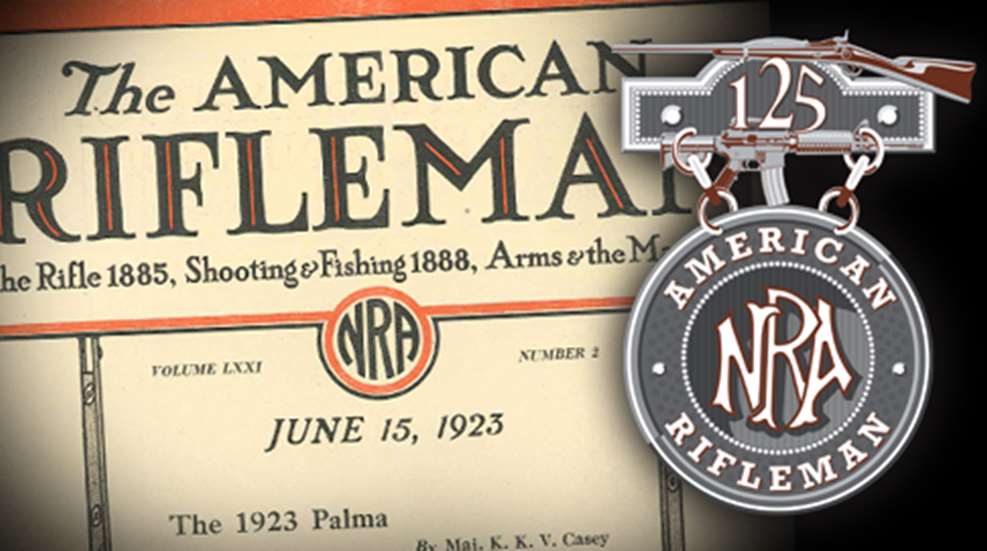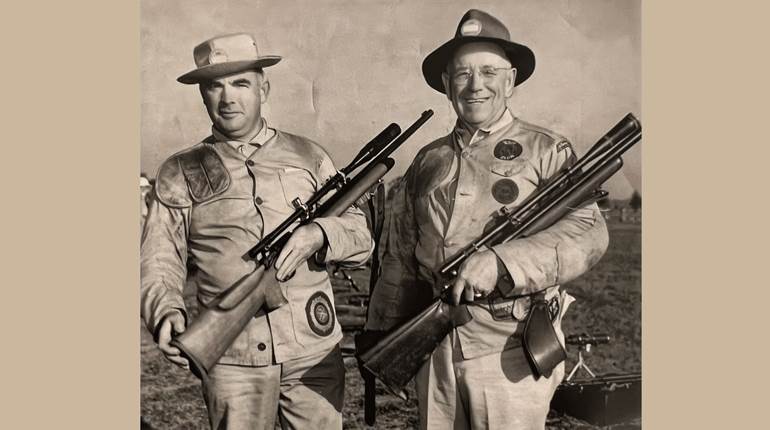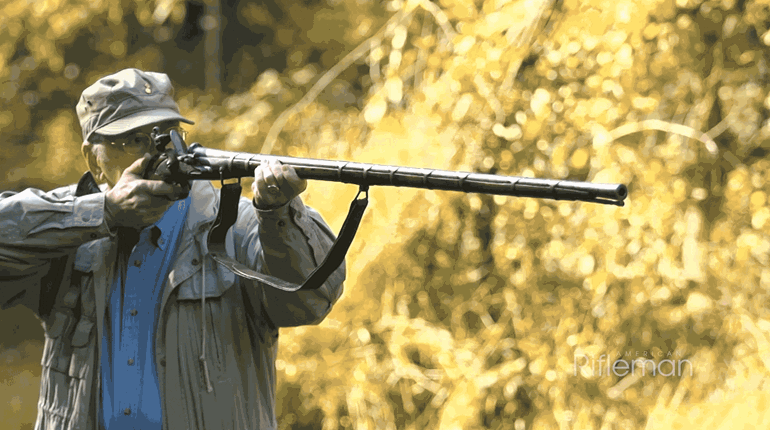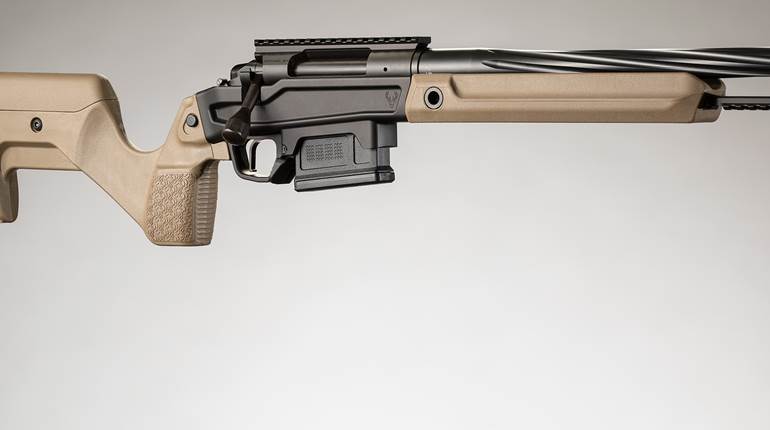
From the January, 1971 issue of American Rifleman
Coats of Arms and other markings on Mauser turnbolt rifles and carbines are extremely varied. While they undoubtedly proved a headache for arms manufacturers who had to maintain an extensive assortment of marking dies, they now provide considerable fascination and delight for arms students and collectors. The first successful Mauser rifle was the Model 1871 made principally for Germany. Developed by Paul Mauser and his brother, Wilhelm, this single-shot blackpowder arm was superseded by a tubular-magazine repeater, the German Model 71/84. These early Mausers were produced by the Mauser factory at Oberndorf a./N., Germany, Austria, and German government arsenals. Blackpowder Mausers were also produced for China, Serbia, and Turkey.
France adopted the Lebel smokeless-powder magazine rifle in 1886, and Germany kept pace with this important development by adopting a 7.9 mm. smokeless-powder magazine rifle was developed by a government commission, and incorporated several action features of Mauser blackpowder rifles along with a modified version of the Austrian Mannlicher box magazine and the cartridge clip. Paul Mauser was disappointed that Germany had adopted the Model 1888 without consulting him, but a 7.65 mm. smokeless-powder rifle that he developed was adopted by Belgium in 1889.
Featuring a box magazine and a one-piece bolt with dual forward locking lugs, the Belgian Model 1889 rifle served as a basis for further Mauser turnbolt rifle developments. Improved models adopted by Turkey, Spain, and various South American nations were introduced in the early 1890’s. Most important of these was the Spanish Model 1893, the first Mauser with a staggered-column box magazine.
Produced by Many Firms
In addition to the Mauser firm, leading producers of Mausers during the early 1890’s were Fabrique Nationale in Herstal, Belgium, and Ludwig Loewe & Co., Berlin, Germany. Loewe owned a controlling interest in the Mauser Co. and also had a partial financial control of Fabrique Nationale which was founded for the purpose of producing Belgian Model 1889 military rifles. In 1896, both Loewe and Mauser came under the control of Deutsche Waffen-und Munitionsfabriken, A.-G. (German Arms and Ammunition Co., Inc.) abbreviated DWM.
Sweden adopted a Mauser carbine in 1894 and a Mauser rifle in 1896, both chambered for the 6.5x55 cartridge. Also in 1896, Germany experimented with Mausers of various calibers. As a result of these experiments, Germany adopted an improved 7.9 mm. Mauser rifle in 1898.
Produced in large quantity by the Mauser Co., DWM, other commercial firms, and several German government arsenals, the Mauser 98 in various rifle and carbine versions was the standard German shoulder arm for almost half a century. It was adopted also in slightly modified form and in various calibers by many other nations, particularly in Central and South America.
Sporting versions with actions of Model 98 design were produced by the Mauser Co. and several other firms. The Mauser Co. called its rifles and carbines original Mausers to distinguish them from those offered by other makers.
Military arms business of the Mauser firm was curtailed greatly after World War I by restrictions of the Versailles Treaty, and the principal suppliers of military Mausers during the 1920’s and early 1930’s were Fabrique Nationale in Belgium and Ceskoslovenska Zbrojovka (Czechoslovakian Arms Factory), Brno, Czechoslovakia. Arms factories in Spain, Poland, Yugoslavia, and China also turned out Mausers in large quantity.
Production of military Mausers was resumed in Germany during the mid 1930’s when Hitler disregarded the Versailles Treaty. During this period, Mauser produced a large quantity of Model 98k carbines for Germany and Standard-Modell Mauser short rifles for export.
Many other firms also produced the 98k and various other Mausers for the German military machine during the rearmament period and World War II. In an attempt to conceal the identity of the producers, these arms were stamped with manufacturers’ code markings instead of firm names. Number codes with a letter prefix were used first, but the letter prefix later was dropped. In 1941, the number codes were replaced by letter codes, and a further change was made in the last part of the war when a new system of letter codes was adopted. Meanings of most letter codes are given in captured German code books, but reliable records on number codes are not available and apparently were destroyed. Meanings of only a few number codes have been satisfactorily determined, and there has been considerable misinformation on the subject. The same is true of later letter codes.
Military Mausers were produced in limited quantity following World War II, but are now obsolete for military purposes. Mauser sporting rifles, however, remain highly popular. Improved sporter versions are now produced in several countries, particularly Germany, Belgium, Czechoslovakia, and Sweden.
Manufacturers Codes on German Military Mausers*
S/42 Mauser-Werke, A.-G.,
42 Obendorf a./N.
660 Steyr-Daimler-Puch, A.-G., Steyr, Austria
945 Waffenwerke Bruenn, A.-G., Brno, Czechoslovakia
ar Mauser-Werke, A.-G., Werk Borsigwalde, Berlin-Borsigwalde, Eichborndamm
ax Feinmechanische Werke, G.m.b.H., Erfurt, Altonaerstr. 25
bcd Gustloff Werke, Werk Weimar, Weimar
bnz Steyr-Daimler –Puch, A.-G., Werk Steyr, Steyr, Austra
byf Mauser-Werke, A.-G., Oberndorf a./N.
ce J.P. Sauer & Sohn, Suhl
dot Waffenwerke Bruenn, A.-G., Brno, Czechoslovakia
dou Waffenwerke Bruenn, A.-G., Werk Bystrica
duv Berlin-Luebecker Maschinenfabriken, Werk Luebeck
svw Mauser-Werke, A.-G., (late code) Oberndorf a./N.
*Several number codes and a few letter codes are not shown since their meanings are unknown or uncertain.
About the Author
Ludwig E. Olson is a retired Army Warrant Officer who served chiefly with the Ordnance Corps. A member of The American Rifleman staff since 1957 he has written many articles on arms and ammunition and is the author of the book Mauser Bolt Rifles.





































